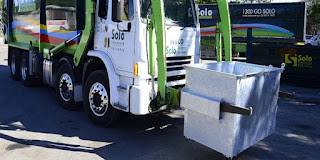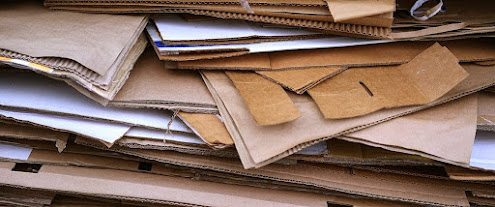The Application of Green Waste in Ensuring Sustainable Development
Green waste constitutes organic waste materials that are biodegradable, primarily originating from landscaping activities, plants, and gardens. Unlike hazardous, chemical, toxic, solid, liquid, and gaseous waste, green waste stands out due to its potential for conversion into valuable resources.
Green waste can come
from various sources, such as:
·
Eggshells
·
Vegetables
·
Coffee
grounds
·
Branches
·
Stems
·
Grass
clippings
·
Leaves
·
Twigs
·
Seeds
·
Weeds
·
Flowers
The management of
green waste aids in sustainability, which helps in the preservation of natural
resources and the protection of the environment.
Some of the uses of
green waste include:
1.
Soil
Improvement
Green waste can be used to control the erosion of soil
near construction sites. It helps stabilize soil and prevents runoff during
heavy rainfall.
2.
Mulching
The chipped green waste can be used for mulching. A
piece of green waste can be used as mulch to cover the soil surface around
plants and trees. This helps retain moisture and regulate soil temperature. It
also suppresses the growth of weeds and protects plant roots. It helps to
divert green waste from landfills and thereby reduce greenhouse gas emissions.
3.
Composting
Perhaps the most common use of green waste is
composting. The green waste breaks down into nutrient-rich compounds if it is
mixed with other organic materials like branches, leaves, and seeds. It helps
to enhance soil fertility, plant growth, and soil structures. During
composting, microorganisms break down the organic waste into humus, which
further improves the structure of the soil and its fertility. It is a natural
decomposition process that converts green waste into nutrient-rich compost. It
reduces the need for chemical fertilisers and enhances soil and plant growth.
4.
Land
Restoration
Green waste can be successfully used for land
reclamation projects. The degraded land areas can be restored and improved by
introducing green waste, thereby improving soil inhabitation and vegetation
establishment.
5.
Other
Uses
i.
Anaerobic
Digestion
In the absence of oxygen, a biological process
transforms green waste into biogas and nutrient-rich digestate. A variety of
microorganisms work together to complete the procedure. Feedstock preparation,
anaerobic digesters, anaerobic decomposition, biogas collection, and digestate
processing are the steps in this process. This approach has a number of
advantages, including methane capture, waste diversion, nutrient recycling, and
a decrease in dependence on fossil fuels.
ii.
Bioenergy
Production
It refers to the generation of energy from organic and
green waste, such (comma) as agricultural residues, crop waste, and plant
waste. Green waste materials are broken down by microorganisms to produce a
mixture of methane and carbon dioxide. Some of the benefits of this method are
greenhouse gas reduction, rural development, reduction of environmental
pollution, and increased sustainability.
Illegal dumping of green waste, organic waste and soil
can seriously threaten Australia's primary industries, natural environment,
livestock, human health, and people's livelihoods. If you are looking for green
waste dump Adelaide services, you can reach out to the Adelaide Waste
and Recycling Centre (AWRC). Some of the more common materials that are
accepted into its green organics waste stream include:
·
Business
organic waste
·
Food
organics
·
Green
foliage including branches
·
Kerbside
green waste collections from local Councils
At the Adelaide Waste and
Recycling Centre (AWRC), green waste and organic waste from residents
and commercial businesses from across the Adelaide region are accepted. The
company takes great pride in the positive impact that its work has on the
environment, and every tonne of green waste that it can recycle keeps waste out
of landfills, which in turn makes the natural environment healthier. The green
waste services performed at the AWRC are in accordance with all Environmental
Protection Authority (EPA) requirements, while its certified management systems
ensure that the operation is optimised to dispose of your green and organic
waste safely and efficiently. When the green waste arrives at its North
Plympton location, it is diligently separated, and any obvious contaminants are
removed and redirected to their appropriate destination. If you have any green
or organic waste in areas of Adelaide, you can drop it off at its disposal
centre at 181 Morphett Road, North Plympton, Adelaide.
A lot of useful materials can also be made using green
waste. This includes short wooden appliances, garden products, animal food
supplements, paper products like pages, cardboard, and decorative items for
school and college projects for students. Green waste can be composted and used
for activities like agriculture, gardening, and soil improvement, making it a
valuable resource. By managing green waste, we can contribute towards
conserving the environment and natural resources and achieve the aims of
sustainable development.





Comments
Post a Comment